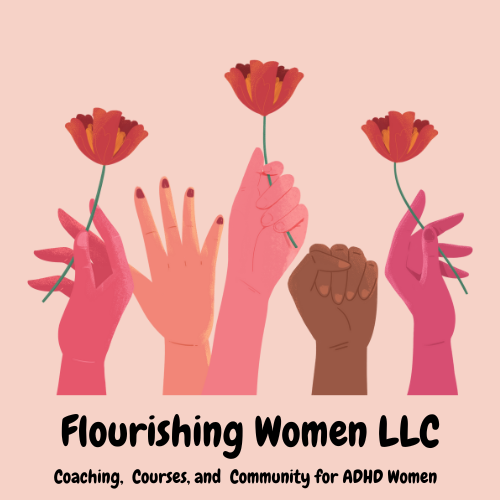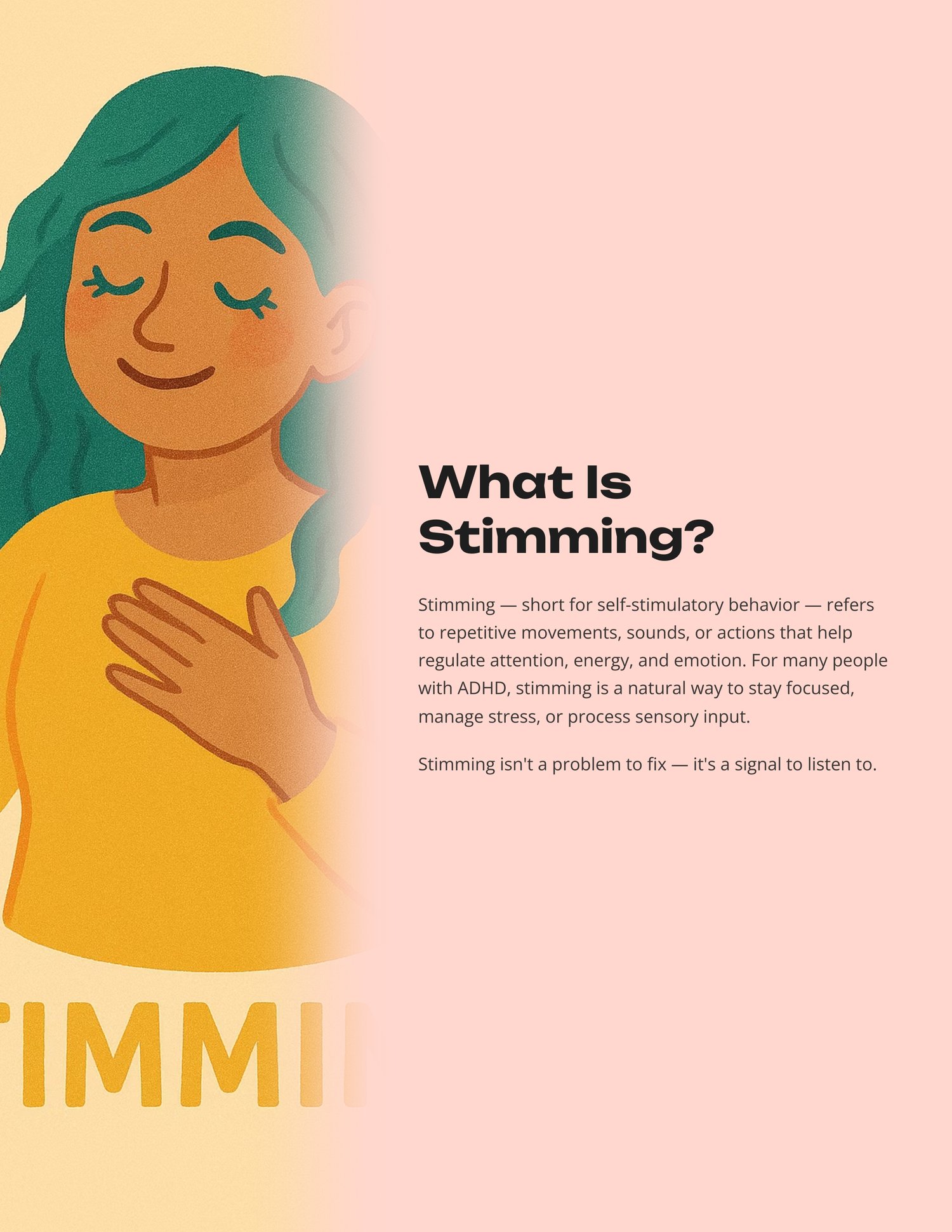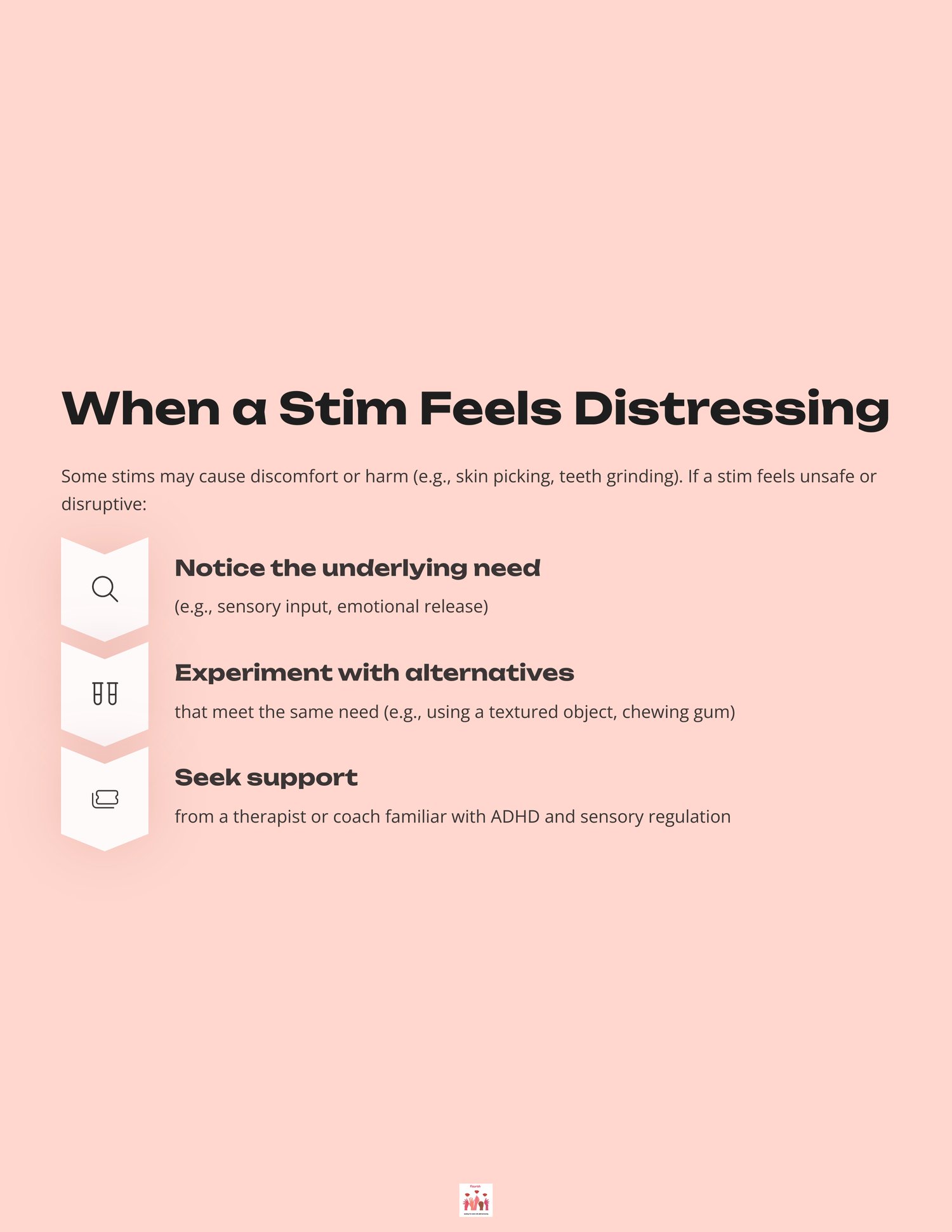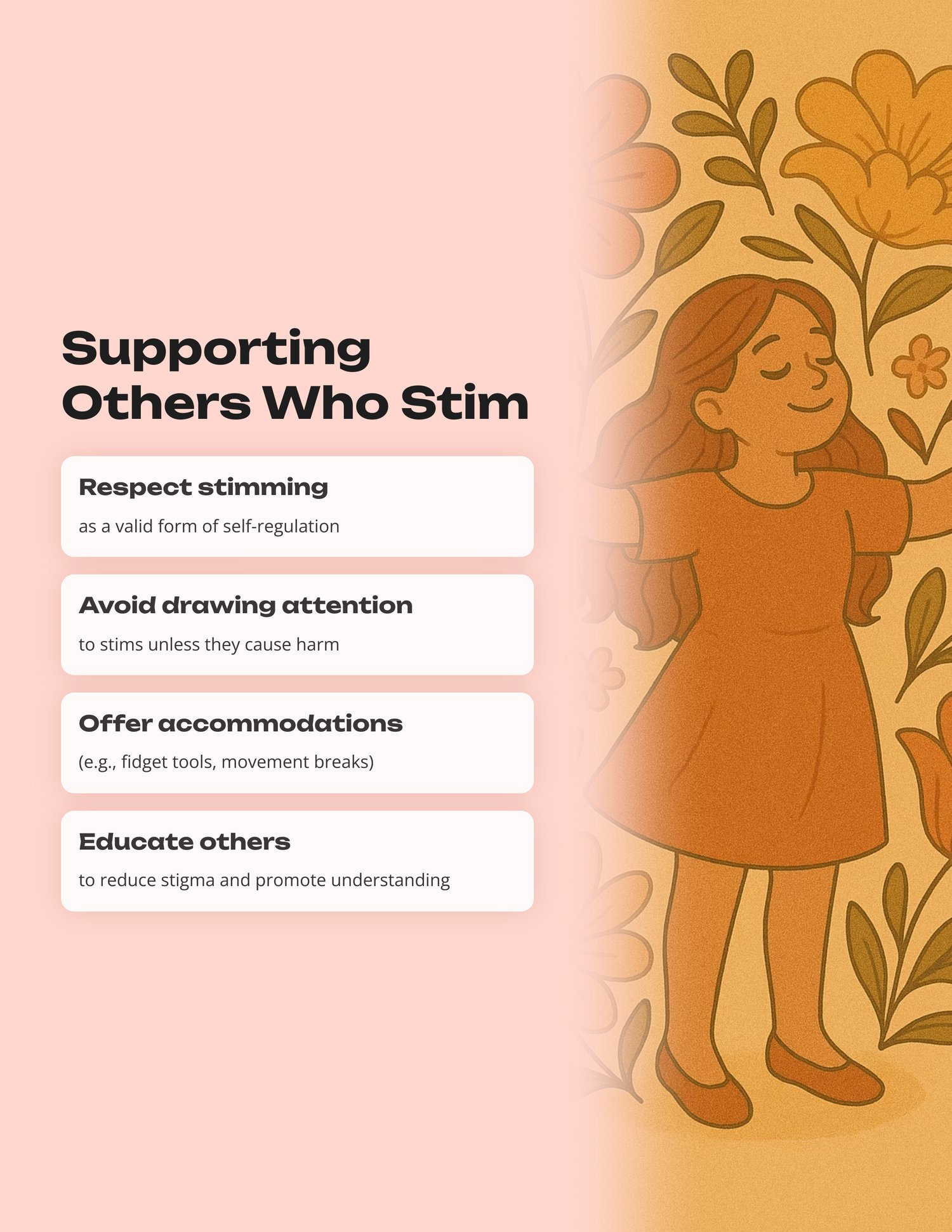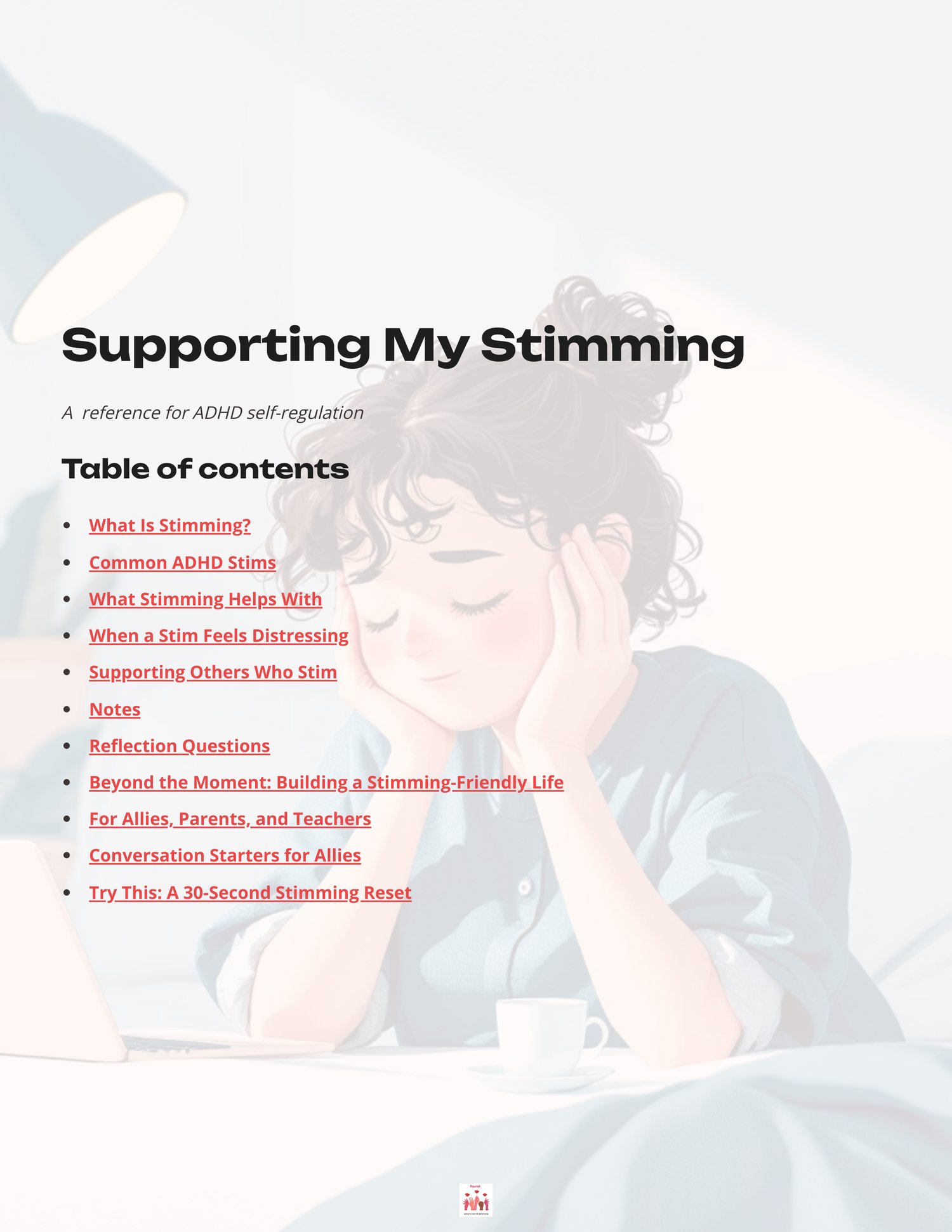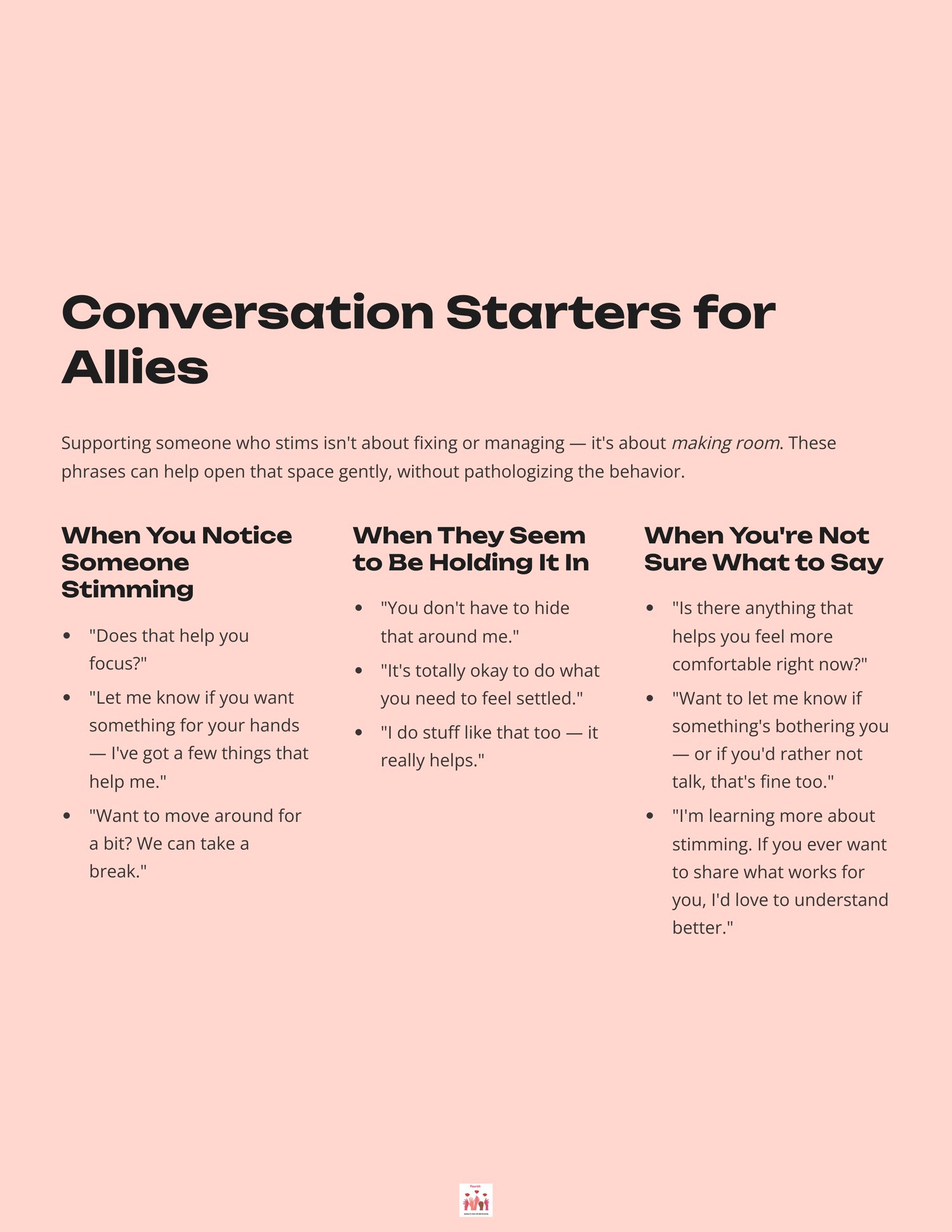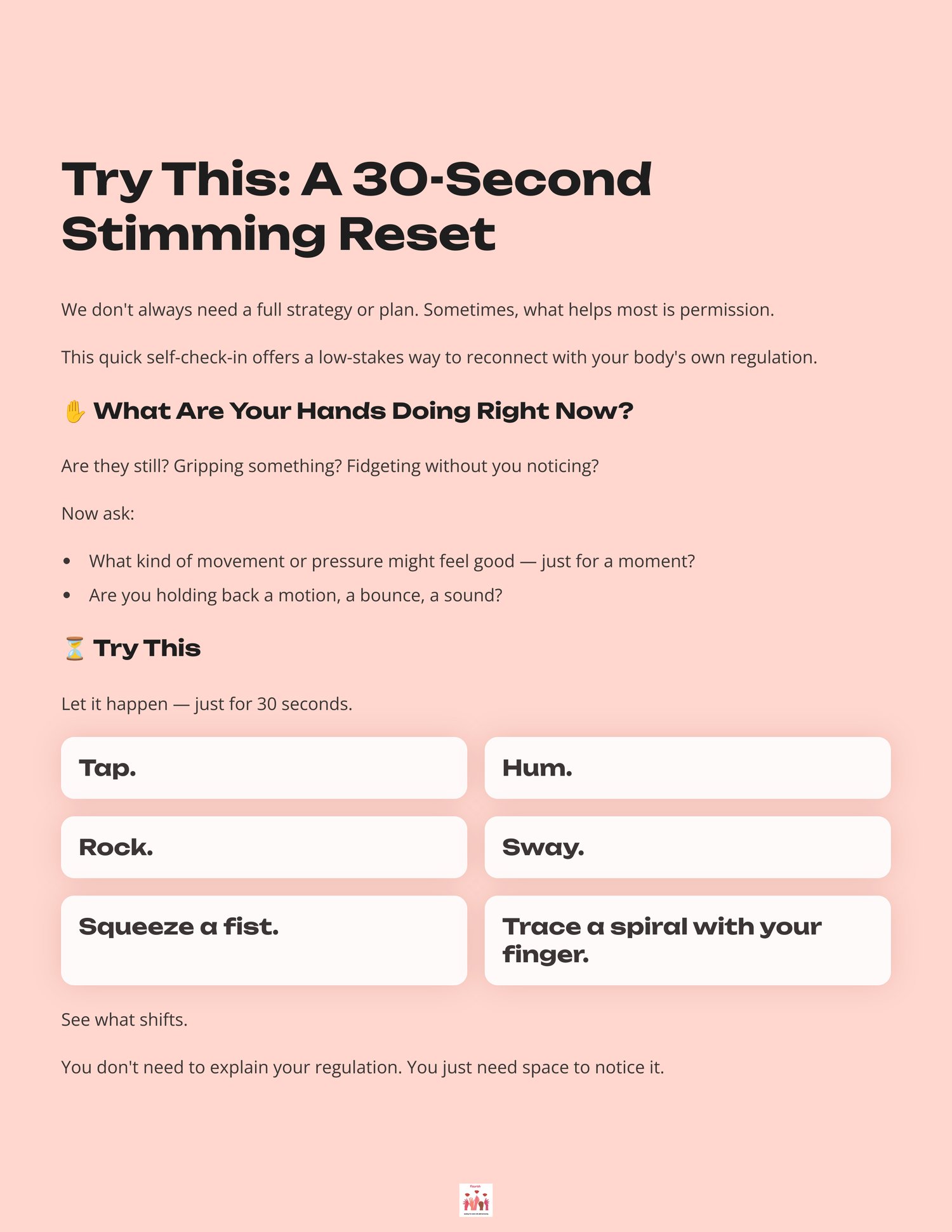ADHD and Stimming
On Sale
$999.99
🌀 What these free mini Worksheets cover
This guide explains stimming—repetitive movements or sounds—as a valid and often unconscious form of self-regulation for people with ADHD. It aims to reduce stigma and help people support themselves and others in stimming-friendly ways.
📚 Key Sections
- What Is Stimming?
- Stimming is a natural response that helps regulate energy, focus, emotions, and sensory input.
- Common ADHD Stims
- Includes tactile (twirling hair, tapping), vestibular (rocking, pacing), vocal (humming), visual (blinking), and other (fidgeting, doodling).
- What It Helps With
- Managing overwhelm
- Regulating attention
- Processing emotions
- Sensory soothing
- Creating rhythm and grounding
- When a Stim Feels Distressing
- If stimming causes harm (e.g., skin picking), the worksheet suggests:
- Identifying the need behind it
- Trying safer alternatives
- Seeking ADHD-aware support
- How to Support Others Who Stim
- Respect it
- Don’t draw attention unless it causes harm
- Offer tools and breaks
- Educate to reduce stigma
- Building a Stimming-Friendly Life
- Keep sensory tools handy
- Make space for subtle movements
- Reclaim quiet sounds (like humming)
- Pay attention to where you feel safe stimming
- Reflection Questions
- Journaling prompts to explore shame, safety, needs, and self-acceptance around stimming.
- Support for Allies, Parents, Teachers
- Don’t point it out
- Normalize movement
- Offer gentle curiosity (“Want something to fidget with?”)
- Model acceptance
- Conversation Starters
- Language that affirms and supports rather than polices or corrects stimming.
- 30-Second Stimming Reset
- A quick grounding exercise to reconnect with what your body might need through motion or sensation.
